Neil deGrasse Tyson's StarTalk
Discover the wonders of the universe with Neil Degrasse Tyson's Startalk.
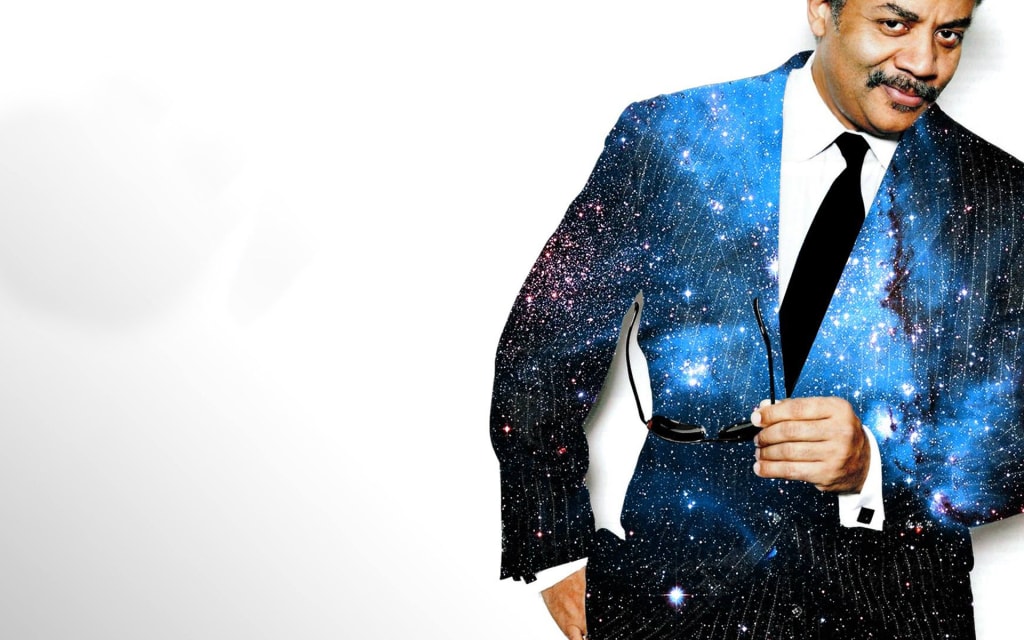
“The good thing about science is that it's true whether or not you believe in it.” Neil deGrasse Tyson doesn’t care if what he says upsets you; it’s all based in science and science is fact. The astrophysicist has been very outspoken about science for decades now. In fact, he and fellow scientist Bill Nye celebrated the 35th anniversary of the Planetary Society—an organization dedicated to all things astronomy, planetary science, and exploration—in October of 2015.
Not since Carl Sagan has a public figure charmed the public with their fierce intelligence and love for the cosmos. In a nation losing the science race, Tyson works diligently to motivate young people into pursuing the study of nature and triggering adult's curiosity along the way. Born and raised in New York City, astrophysicist Neil deGrasse Tyson discovered his love for the universe at an early age. After studying at Harvard University, he earned his doctorate from Columbia University in 1991. Tyson went to work for the Hayden Planetarium in 1996 and still serves as its director. He hosted the NOVA ScienceNow series from 2006 to 2011, before moving on to host Cosmos on Fox.
What makes Tyson so enthralling is his charm and enthusiasm. His amazement is similar to a child who learn about the stars for the first time. They stare at the sky in awe, barely comprehending the immense universe. Tyson said, "I know that the molecules in my body are traceable to phenomena in the cosmos. That makes me want to grab people on the street and say: 'Have you HEARD THIS?" All too often, people live without ever contemplating the intricacies of the world, amazing facts like the atoms which comprise the body were born in the center of a Neil deGrasse Tyson are needed in the world to shake us, to point to the stars and remind people about the incredible cosmos.
Neil deGrasse Tyson is breaking boundaries with his new late-night talk show, StarTalk. Originally a podcast, this new tv show airs on Sundays at 11 pm on the National Geographic Channel. More importantly, it is the first show of its kind. Each episode features a different celebrity talking with deGrasse Tyson about their careers as well as scientific interests. Intellectual debates often break out and audiences get to hear both sides of the argument. Some of the guest stars so far include George Takei, Arianna Huffington, Seth MacFarlane, Bill Clinton, and many others. The beauty of this show is that it promotes science education while proving that chemistry, biology, physics, and astrophysics can indeed be fun. Here are 10 reasons why you should watch Neil deGrasse Tyson’s StarTalk.
It’s Original
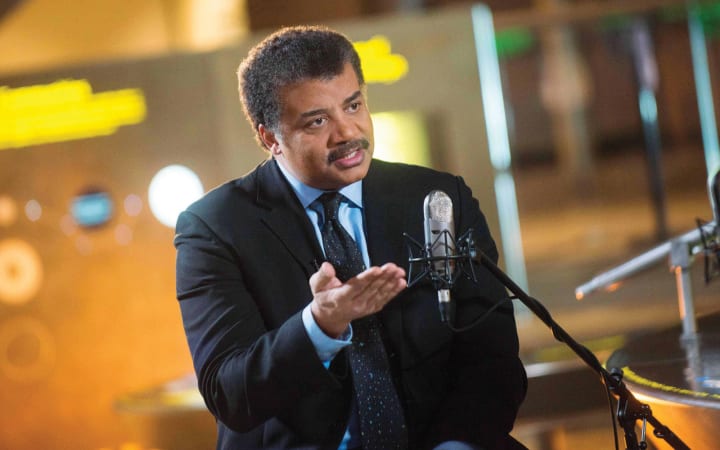
There are talk shows and there are shows about science, but never before have the two been combined. One of the most recent and famous shows about science is CBS’s The Big Bang Theory. The show is about physicists at Caltech and their equally smart friends as they try to navigate their way around average people. The show has received lots of critical acclaim over the years, especially actor Jim Parsons who has won 2 Emmys and a Golden Globe for his role a Sheldon Cooper. The show itself has won a 2013 People’s Choice Award for Favorite Comedy. While The Big Bang Theory can be considered a show about science, the science sometimes disappears into the background as the characters find themselves in different dilemmas. StarTalk is the first show of its kind to combine the humor found in your favorite talk shows (such as the Tonight Show or Jimmy Kimmel Live!) with the real hard facts of science. And there’s only one person who can lead a show like this—Neil deGrasse Tyson.
It’s Hilarious
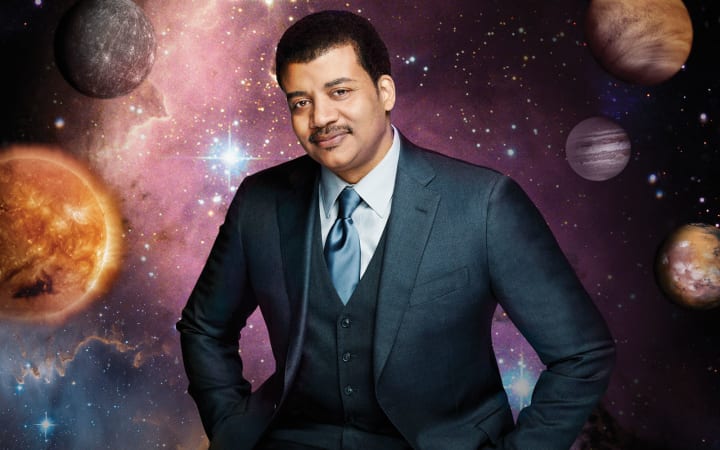
“In 5 billion years the Sun will expand and engulf our orbit as the charred ember that was once Earth vaporizes. Have a nice day.” Neil deGrasse Tyson understands that you have to insert a little comedy into a dense discussion about science. Sometimes the statistics are just too staggering and frightening for people to understand, but deGrasse Tyson always knows how to put a spin on science. While he shows his comedic chops on the show all the time, he has always been naturally funny. During one of his many visits to Comedy Central’s Daily Show, the astrophysicist criticized the opening sequence of the show: “Can I tell you something quick? The beginning of your program? The Earth is spinning in the wrong direction. I'm sorry. I had to get that off my chest." It turned out that the globe in the opening sequence was spinning clockwise instead of counterclockwise, the way the Earth truly spins. It is clear that deGrasse Tyson values comedy as much as he does science because he will have comedian Seth MacFarlane on StarTalk to talk about Family Guy.
It’s on National Geographic
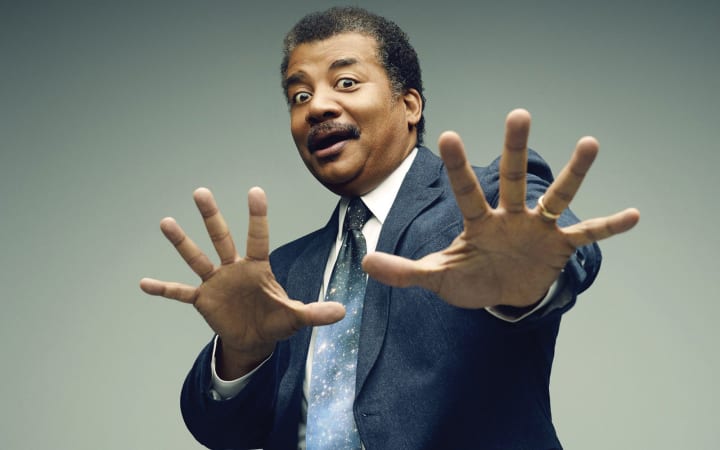
National Geographic magazine is an American institution, which is why it has made its way into television. The magazine originally started its publication in 1888 and has continued to be one of the top circulating magazines in the world. It is known for its articles and photography about history, nature, and science. Between 1980 and 2011 the magazine has won a total of 24 National Magazine Awards. This success led the magazine to start the National Geographic Channel in 2001. Like the History Channel and Discovery Channel, the National Geographic Channel features documentaries with factual content involving nature, science, culture, and history, plus some reality and pseudo-scientific entertainment programming. The channel offers programs such as Cosmos: A Spacetime Odyssey, Wild Amazon, Science of Stupid, Apocalypse 101 and many others. For this reason, StalkTalk fits into their schedule perfectly.
It Combines Pop Culture & Science
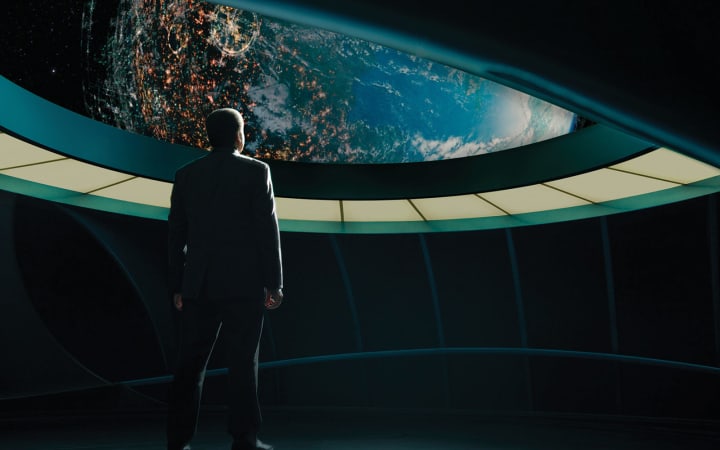
Neil deGrasse Tyson proves there’s science behind everything—even combing his own mustache. In high school, we often left out STEM classes thinking the same thing: “When am I ever going to use this?” We felt that the complex ideas our teachers were jamming in our noggins would never come in handy in real life situations. However, deGrasse Tyson is challenging the idea that science is useless. In one of his episodes on StarTalk, he explains how he uses scientific method to take care of his mustache. As Shakespeare once wrote, “There’s method in my madness” and the astrophysicist has made this his motto. In an upcoming November 2015 episode with comedian Seth MacFarlane, the two will even discuss the science behind Family Guy. Neil deGrasse Tyson continues to bring together pop culture and science, especially when he took part I a viral video for The Martian where he discussed the fictional Ares 3 mission featured in the film.
It’s Political
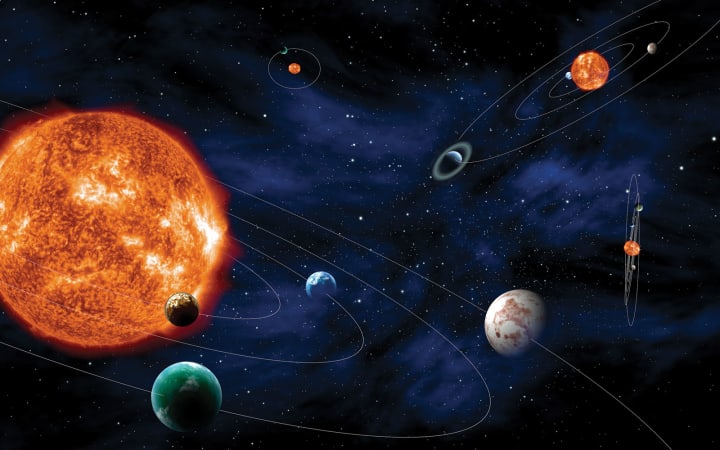
You’d be lying if you said science and politics were two separate entities. In the media today, we see this with Dr. Ben Carson running as a Republican nominee for the presidential election. Instead of trying to separate science and politics, deGrasse Tyson embraces the two and actively seeks to make more connections. For example, he interviewed Jimmy Carter during the first season of StarTalk and spoke with him about eradicating disease. This is especially important because Carter was diagnosed with brain cancer in the summer of 2015. In the second season of the show, the scientist will also interview former US president Bill Clinton and talk to him about being a strong advocate of science education and his goals to advance STEM programs while he was in office. Many people try to separate politics and science, claiming they have nothing to do with one another, but they will always be intertwined.
It Has Famous Guest Stars
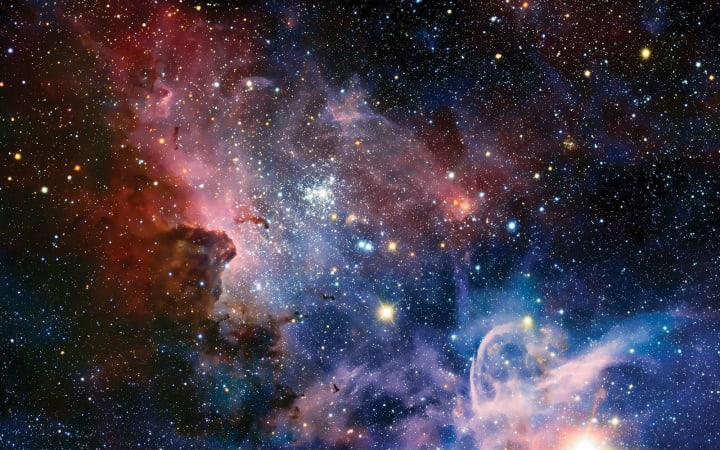
Neil deGrasse Tyson has a lot of famous friends, and he doesn’t mind showing them off on his show. The very first episode of StarTalk featured guest George Takei, also known as Sulu from the original Star Trek tv series. They ended up discussing Star Trek’s legacy as a series that pioneered the virtues of diversity, science and optimism in American culture. He also interviewed Christopher Nolan, the director who has received over 20 Academy Award nominations and 7 awards. Keeping with the trend of mixing science and pop culture, they spoke about the science behind Interstellar and if it could actually happen in real life. Neil deGrasse Tyson then interviewed Arianna Huffington, the co-founder of Huffington Post. They ended up examining news in the information age and how it has impacted the jobs of journalists. Overall, deGrasse Tyson brings on famous guest stars to talk about their fields of interest in order to get audiences interested in what they do. Each guest star is an expert in their field who shines a light on what it takes to be successful.
It Pushes Boundaries
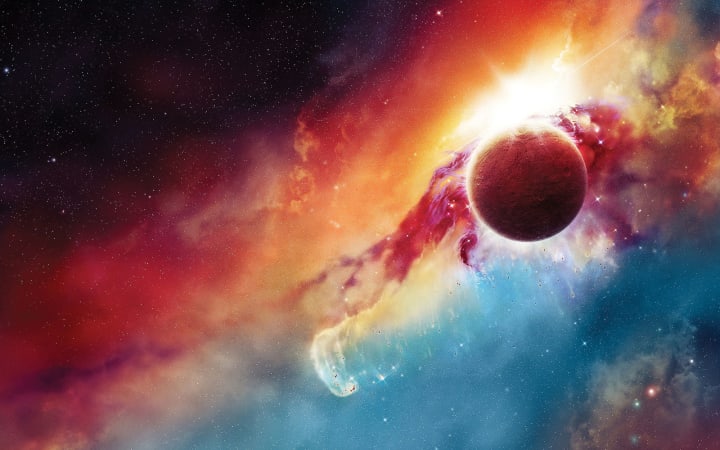
StarTalk is a platform for celebrities to share their interests. When you are a public figure, people are only interested in what you do. They don’t care about your own interests and ideas, and it is strange when you speak about them. For example, everyone watching StarTalk was surprised to hear comedian Larry Wilmore speak about combining science and comedy. Wilmore, host of The Daily Show spin-off The Nightly Show with Larry Wilmore, usually speaks of politics, the news, and other related topics. The show itself aired on Comedy Central to take the place of The Colbert Report after Stephen Colbert took on The Late Show. Critic Don Kaplan of the Daily News said, “While the program as a whole has room to grow, Wilmore's comedy is sharp, solid and filled with keen observations and strong enough to have earned him the distinction of being the only high-profile black voice in late night television." But before his episode of StarTalk, he never spoke about science and comedy. StarTalk gives celebrities the chance to talk about their passions and let audiences get to know them better.
It Features Bill Nye
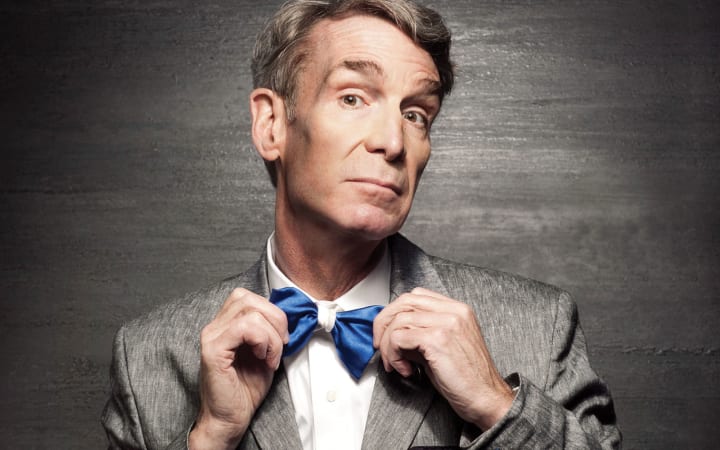
Bill! Bill! Bill! Everyone knows Neil deGrasse Tyson and Bill Nye are the best of friends, but this friendship is solidified by Nye’s appearances on StarTalk. Bill Nye is a scientist best known for his PBS educational show Bill Nye the Science Guy. He originally graduated from Cornell University with a degree in Mechanical Engineering and has dedicated his life to educating people about science. Besides holding 6 Honorary Doctorate degrees from a variety of universities, he also holds an iconic friendship with deGrasse Tyson. As two of the leading minds in the science field, they spend a lot of time together at conventions and other scientific events. They frequently talk about each other on talk shows and joke about one another to interviewers. They even posted pictures of each other when they spent Thanksgiving together. Never has the world seen a friendship like this. On StarTalk, Bill Nye is featured in almost every episode. In a pre-taped segment, he talks about the topics of the episode and gives his own opinion on the matter. This also gives the audience different perspectives on the same issue.
It’s Increasing Public Interest in Science
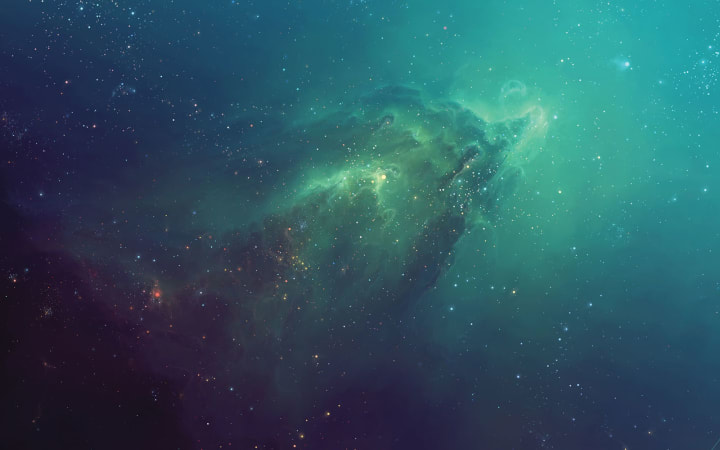
According to studies, 2 out of 10 people would say that science was their favorite subject in high school. Mainly people claim subjects like physics, chemistry, and biology were too difficult and wouldn’t relate to real world situations. But as deGrasse Tyson proves, there’s science behind everything and anything in the world. By having celebrities come on the show and talk about their scientific passions, it increases awareness about science in general. According to the National Math and Science Initiative, only 44% of US high school graduates in 2013 were ready for college-level math. In addition, only 36% of US high school students in 2013 were ready for college-level science. Shows like StarTalk, which are aimed for audiences of all ages, expose science and even math to younger generations. By doing this, these children find out that science actually can be fun and interesting, not just a pain.
Neil Degrasse Tyson
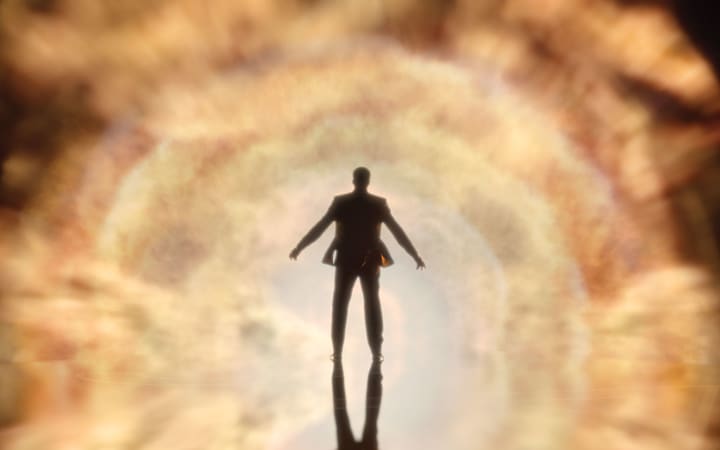
"Let us not fool ourselves into thinking we went to the Moon because we are pioneers, or discoverers, or adventurers. We went to the Moon because it was the militaristically expedient thing to do." Neil deGrasse Tyson always keeps it real. As an astrophysicist, cosmologist, author, and science educator, he’s one of the leading minds in the scientific field today. He’s not afraid to shut down ignorant people while educating them in the process. The US National Academy of Sciences awarded deGrasse Tyson the Public Welfare Medal in 2015 for his "extraordinary role in exciting the public about the wonders of science.” He has also won the 2004 NASA Distinguished Public Service Medal, the 2009 Isaac Asimov Award from the American Humanist Association, the 2014 Dunlap Prize, 2015 Public Welfare Medal from the National Academy of Sciences, and many more. In 2001, he even had an asteroid (13123 Tyson) named after him by the International Astronomical Union. Neil deGrasse Tyson has become such an icon in American history that his legacy will live on for decades to come.
For those who don't get time to sit in front of a TV or who prefer radio to television, deGrasse Tyson also puts on StarTalk Radio as well. StarTalk Radio is the first and only popular commercial radio program devoted to all things space. When asked what the show would cover, Tyson responded, "Everything under the sun; Or rather under the universe!"
Best StarTalk Radio Episodes of 2012
StarTalk Radio gained a great deal of popularity throughout 2012, but there were some episodes that simply outperformed the others by lightyears. These are the best StarTalk episodes of 2012, as determined by viewer downloads.
Detractors of video games accuse them of being the lowest form of entertainment at best, and active contributors to violence at worst. But are video games just a mindless distraction? In this episode, Neil deGrasse Tyson and Eugene Mirman talk with Will Wright, creator of The Sims and Spore, and Jeffrey Ryan, author of “Super Mario – How Nintendo Conquered America.” They discuss the evolution of video games, and how they promote learning, creativity, and exploration.
Part two focuses on relationships and the brain. The panel begins with a conversation on how humans cope with the loneliness of space. Then they discuss how similar your brain on love is to your brain on drugs, and how experiencing a breakup is not so different from withdrawals. Neil deGrasse Tyson, Heather Berlin, Wyatt Cenac, Cara Santa Maria, and Eugene Mirman finish their conversation for the second part of the episode devoted to the brain.
What is normal? Is there even such a thing? Why will vampires never know self-love? Neil deGrasse Tyson, Heather Berlin, Wyatt Cenac, Cara Santa Maria, and Eugene Mirman gather to discuss these questions and more. Part one focuses on brain disorders, how technology and pharmacology can can impact how a brain functions, and how our brains grapple with understanding our place in the universe.
Neil deGrasse Tyson and Dr. David Grinspoon return for the second part of an interview with Bill Maher. As Neil notes, our Constitution doesn’t specify how you educate people, so how do Dr. Grinspoon and Bill Maher view science in education? In addition, how has the line between democrats and republicans changed over time? At nearly every turn of the interview is a possibly divisive topic, from abortion to the death penalty.
How do scientists commemorate a big discovery? Why, make a podcast about it, of course! Neil deGrasse Tyson, Bill Nye the Science Guy, and Kyle Cranmer, one of the CERN physicists who discovered the Higgs boson, talk about the “God Particle” in this celebratory episode. Eugene Mirman, Sarah Vowell, and Scott Adsit keep things funny and remind the scientists to slow down for those of us who don’t have a degree in physics.
Featuring the incredibly smooth voices of Neil deGrasse Tyson and Morgan Freeman, this episode is definitely easy on the ears. Morgan Freeman is one of the most famous actors in the world, and has played roles ranging from God to a convicted murderer. In this episode Neil interviews Morgan Freeman to see how science impacted his career and what he thinks is out there among the stars.
Changing pace from the usual look outwards, this episode looks at one of the most common materials on Earth. Learn how salt plays a role across the world, from fighting zombies to how it’s used as a hidden symbol in the painting “The Last Supper.” Author of “Salt: A World History,” Mark Kurlansky, and Peter Whiteley, curator of anthropology at the American Museum of Natural History in NYC, are the guests of the show.
Mike Massimino, a charismatic NASA astronaut who’s been on two missions to repair the Hubble Telescope, shares his personal experiences in space with Neil deGrasse Tyson, Eugene Mirman, Kristen Schaal, and John Hodgman. They discuss topics ranging from how seeing the Earth from space changes your perspective, to what the technical term for an astronaut diaper is.
Have you ever wondered why Neil deGrasse Tyson’s sideburns are pointed? Wil Wheaton knows! First entering the public eye as Wesley Crusher on Star Trek, Wil discusses his experiences on the set, how the technology of Star Trek impacts reality, and what cleaning the holodeck would be like. Neil and Wil are joined by Kristen Schaal, Paul F. Tompkins, and Eugene Mirman for this sci-fi driven live event.
Co-host astrobiologist Dr. David Grinspoon joins Neil deGrasse Tyson to reflect on an interview with Bill Maher. In this episode you can’t help but feel awe at how many lives Carl Sagan has touched, including both Dr. Grinspoon and Bill Maher. Controversial as usual, Bill talks about his views on whether or not religion can reconcile with science and where he thinks space travel ranks on the priority scale.
Best StarTalk Radio Episodes of 2013
2013 brought us another year of StarTalk Radio, with the show gaining even more followers and presenting even more fascinating episodes. These are the viewer's favorites from 2013.
Coming in at number 10 is an episode that could just as easily be called “History of Space Exploration 101.” Neil deGrasse Tyson interviews Prof. John Logsdon, an expert in the history of space exploration. Learn how the space race started and how going up into space changed our view about our own home planet.
Have you ever wondered about the physics of Quidditch in space? How about what astronauts eat (besides ice cream)? What do Saturn’s rings look from Saturn itself, and can you bring your cat with you to colonize Mars? How many different ways can you die in space? Chuck Nice joins Neil deGrasse Tyson to answer these questions from listeners, and more.
Kristen Schaal, author of The Sexy Book of Sexy Sex, joins Neil Degrasse Tyson to discuss interviews with Mary Roach, author of Bonk: The Curious Coupling of Science and Sex, sex therapist Dr. Ruth Westheimer, and astrophysicist Charles Liu. In this episode you’ll find out what part of your body other than your genitals has erections, how female sexuality has changed over time, and what medicine for women is on the horizon.
Famous for such classics as Ghostbusters and Trading Places, find out what Dan Aykroyd considers the “purist” form of comedy and why Chuck Nice disagrees. Astrophysicist Charles Liu also joins Neil deGrasse Tyson for this episode. Comedy isn’t the only topic up for debate though; the composition of vodka, crystal skulls, and the origin and worldwide popularity of the blues are also discussed.
Breaking with the usual format with a comedian co-host, Neil deGrasse Tyson dives straight into his interview with Joe Rogan. Previously the host of Fear Factor, Joe now runs his own podcast called The Joe Rogan Experience, that ranges in topic from comedy to debates about philosophy. In this episode Neil asks him about how science has impacted his life and his work, and how science literacy would help athletes.
If you’ve never heard Apollo 11 astronaut Buzz Aldrin speak, you need to listen to this episode of StarTalk. He is a definite personality and just as funny as he is smart. The main topic of discussion is the urgency of colonizing Mars and just how such a thing would be possible. This live event also features John Oliver, Andrew Chaikin, Eugene Mirman, and of course, Neil deGrasse Tyson.
Leighann Lord joins Neil deGrasse Tyson for this episode of Cosmic Queries, or as Neil likes to call it, “StarTalk After Hours.” Learn if space really is as dark and empty as it seems, what particle is so small we can’t even measure it, and what time you should set your alarms to in order to prepare for the collision of our galaxy with the Andromeda galaxy.
What has gravity, is invisible, and makes up 96% of our universe? Though it sounds like a riddle and there are certainly many mysteries still surrounding the topic, Neil deGrasse Tyson does his best to answer questions submitted by listeners about dark matter and dark energy. Leighann Lord co-hosts and gives insight on why dark matter needs a therapist.
StarTalk “After Hours” makes yet another appearance on this list, as Neil deGrasse Tyson answers questions from listeners selected and presented by Leighann Lord. What senses could aliens possibly possess beyond our five human senses? How close would aliens have to be to notice our presence? What would Neil ask an alien? All these questions and more answered on this extraterrestrial episode of StarTalk!
This is not your average discussion about the pop culture craze of zombies. Learn how the zombie virus is a powerful metaphor for epidemics in the real world, and what disease in particular the virus is modeled after in World War Z from the author himself, Max Brooks. Dr. Ian Lipkin, Professor of Epidemiology at Columbia, and Eugene Mirman join Neil deGrasse Tyson to talk about the interview and even the possibility of “good” viruses.
Best StarTalk Radio Episodes of 2014
2014 was season 5 of StarTalk Radio, and the show put up more new episodes than they had in any previous season. This gave viewers even more choices for their favorites, and here are the episodes they downloaded most.
Miles O’Brien recounts his career path from a history major to a science reporter for CNN and his most memorable broadcasts. An interesting conversation ensues as Neil deGrasse Tyson and Mike discuss the benefits of hiring journalists who are curious but untrained in science, while also arguing the importance of science literacy among reporters so that infrared isn’t described as a “glowy area.” Chuck Nice also compares and contrasts reporting the news and stand-up comedy.
Bill Nye the Science Guy and Chuck Nice return for part two of this Q & A session. Bill talks about a theory of origin of life - are we all really descendants of Martians? Sounds like a conspiracy theory, but Bill points to some evidence that will definitely make you think. In addition, a discussion of the Doppler effect leads to a blast from the past with Ultraman. Also, exactly how hot is Venus?
Astrophysicist Dr. Steven Soter, co-writer of both the original and new series of Cosmos, joins Neil deGrasse Tyson and Chuck Nice in the studio to discuss the genesis of and the making of the series. Dr. Soter discusses some of the advances in science since the original 1980 series, his favorite line, which series provoked more outcry from evolution deniers, and why the history of science is so fascinating.
Bill Nye the Science Guy fills in for Neil deGrasse Tyson in this episode of Cosmic Queries, with co-hosts Eugene Mirman and guest Astronaut Mike Massimino. Find answers to questions such as how we will solve the problem of energy storage, how magnetism works, and what Bill thinks is the biggest engineering challenge humanity is facing in the next 20-30 years.
Adam Savage and Jamie Hyneman from the long-running TV show Mythbusters talk with Neil deGrasse Tyson about the origin of the show, the importance of play and experimentation even as adults, why failure can actually be a good thing, and why a fear of reptiles might just be in our DNA. Chuck Nice co-hosts to discuss the interview and hold a mini session of Cosmic Queries at the end.
Discover whether Doctor Who, Star Trek (2009), or A Sound of Thunder by Ray Bradbury represent time in a more accurate way. Saturday Night Live writer and comedian Colin Jost is a special guest on the show with Neil deGrasse Tyson. They field questions from listeners, including how the gravity of two black holes could propel you through time and why you don’t want to forget location coordinates in your jump across time.
Find out what Bill Nye the Science Guy’s favorite ice cream flavor is! Oh, and some science stuff, like Bill’s idea of “fun” physics problems and what would happen to a bowling ball if you dug a hole and sent it straight through the Earth. Chuck Nice joins the show as the comedian co-host, and learns how music theory can affect rocket science.
Comic Eugene Mirman co-hosts with Neil deGrasse Tyson for this Q & A episode on recent discoveries. Learn whether we’re more likely to discover life on Mars or a different Earth-like planet first, if black holes ever die, what causes the bruises in the background radiation of the universe, and what the worst use of a warp drive is.
Neil deGrasse Tyson scores an exclusive interview with God Himself. It turns out, he’s quite a sarcastic God. He talks about what species he most regrets letting go extinct, why he created so many stars, and what his station in the Illuminati is. You’ll also discover why God has such a grudge against William Herschel, and what one commandment He thinks the ten could be condensed down to.
You don’t want to miss the Carl Sagan impression in this episode, or the clip of “Cosmos for Rednecks.” Learn how Neil deGrasse Tyson became a “scientific consultant” on Family Guy and how Seth MacFarlane became the Executive Producer of Cosmos: A Spacetime Odyssey, a documentary presented by Neil deGrasse Tyson. The pair gives new insight on how Cosmos was developed, and it definitely feels like listening in on a conversation between two pals.
Best StarTalk Radio Episodes of 2015
While the numbers are still out on the most downloaded StarTalk Radio episodes of 2015, we have reviewed them ourselves and present our favorite 2015 episodes.
A fascinating conversation with Dr. Temple Grandin, a Professor of Animal Science at CSU and named a hero in Time 100 (2010). Dr. Grandin discusses how autism helped her see the world in a different way and transform the slaughter industry. Neil deGrasse Tyson is joined by Chuck Nice and Dr. Paul Wang of Autism Speaks. Humane Society VP Paul Shapiro also talks about the state of the meat industry.
A special Halloween episode of StarTalk Cosmic Queries hosted by Bill Nye the Science Guy and Chuck Nice. The pair answers scientific questions about classic monsters from listeners. Find Bill’s answers to tough questions such as, “out of zombies, vampires, and ghosts, which is the most plausible and why?” and “what is the origin of werewolves?” In addition discover why Bill Nye used to be scared of flashlights.
Evolutionary biologist and called “The Patron Saint of Atheists” by Neil deGrasse Tyson, Richard Dawkins talks about his “good-natured ridicule” of religion and belief in the supernatural, and why he doesn’t think it has a place in science. To debate the other side, Jesuit priest and believer in evolution Reverend James Martin joins Eugene Mirman and Neil to discuss why he doesn’t think you have to choose between religion and science.
Waterkeeper Alliance founder Robert F. Kennedy Jr. and His Holiness the Gyalwang Drukpa, “Guardian of the Himalayas” give us hope for humanity with their defense of the environment, gender equality, and people in poverty. Hydrogeologist Dr. Tess Russo and Neil deGrasse Tyson teach us about the “Triple Point” of water and help us learn more about this life-giving substance, while Eugene Mirman and Jason Sudeikis keep things from getting too heavy.
Bill Nye tackles the controversial topic of genetically modified organisms to explain why he switched sides of the debate. Chuck Nice co-hosts as Bill answers questions about the history of companies making the switch from manufacturers of Agent Orange to biotech industries, whether or not GMOs can occur naturally, and if labeling GMOs is necessary. Topics discussed also include the importance of biodiversity, reducing stress on bees, and if Bill is being paid by Monsanto.
Learn about one of the most diabolical parasites still thriving in many countries, despite being preventable. Jimmy Carter, former President of the United States, discusses how to fight the disease in spite of challenges ranging from war to apathy, including what clever, peaceful threat led to zero cases in Ghana, and how fighting the disease triggered a ceasefire for six months. “The Leech Guy” Mark Siddall and Chuck Nice join Neil deGrasse Tyson in the studio.
Neil deGrasse Tyson sits down with former pilot and current NASA Administrator Major General Charles Bolden to discuss the past, present, and future of NASA. He reveals that there was almost a major disaster with the Hubble Telescope, and how soon we might be able to put humans on Mars. Also in the studio, astrophysicist Dr. Michael Shara and Bill Nye the Science Guy.
Find out if you have what it takes to colonize Mars! Mars One CEO Bas Lansdorp reveals his mission for a permanent settlement, what makes an ideal candidate, and how reality TV could be used to fund it. Cambridge astrophysics grad student and a candidate for the mission, Ryan MacDonald, explains why he applied. Former NASA astronaut Mike Massimino and Eugene Mirman join Neil deGrasse Tyson to discuss the likelihood of such a mission.
Most guests are interviewed in person - not so with Edward Snowden. Those familiar with his story will understand why. Some call him a hero, some call him a traitor, and he had to leave his friends and family in the USA to claim asylum in Moscow. Snowden uses robotic telepresence to talk with Neil deGrasse Tyson about topics ranging from education to encryption, chemistry to Isaac Newton, and of course, the human right to privacy.
“The Real-Life Iron Man” Elon Musk presents his view of the future. Chuck Nice and Bill Nye join Neil deGrasse Tyson in the studio. Elon talks about how video games inspired him to learn computer programming and how he moved from South Africa to become the CEO of SpaceX and Tesla Motor. He also mentions the dangers of AI and what he calls an “optimistic future” that still involves being hit by an asteroid.
About the Creator
Futurism Staff
A team of space cadets making the most out of their time trapped on Earth. Help.

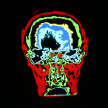


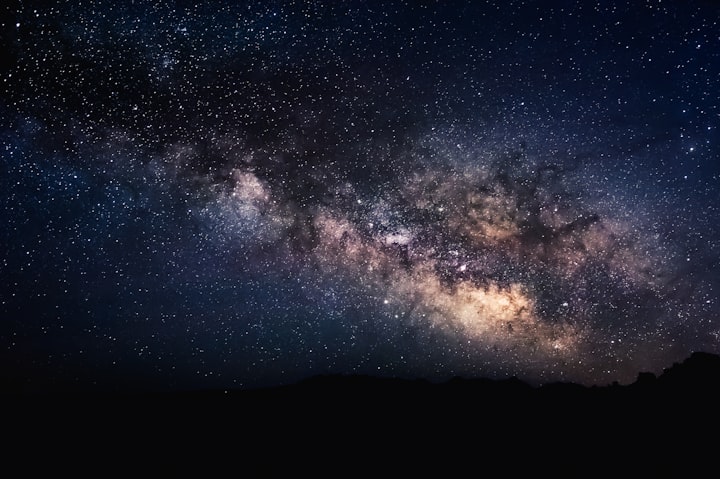

Comments
There are no comments for this story
Be the first to respond and start the conversation.